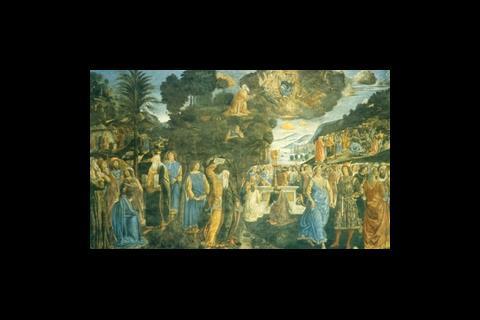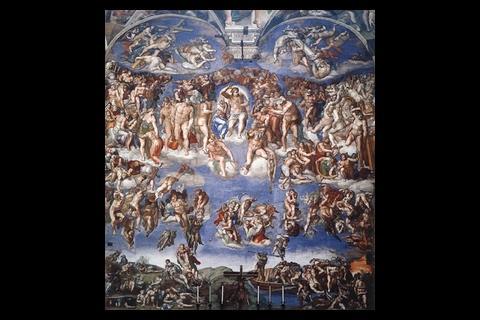Tourists can breathe easily again now that a new air-conditioning system has eliminated the biggest threat to Michelangelo’s frescos in the Sistine Chapel
The Vatican City, always a popular tourist destination, will no doubt receive even more visitors following this summer’s box office hit, the Da Vinci Code - Michelangelo’s frescos in the Sistine Chapel will be marvelled at by more people than ever. Yet it is this daily influx that has left these 500-year-old frescos vulnerable.
Over the years, the Chapel’s walls and ceilings have undergone a number of restorations. The most recent of these restored the works to their original brightness and colours, but left them more vulnerable to attack by moisture and temperature extremes - created mainly by visitors.
Temperature and airflow studies, along with investigations into the chapel’s unique character, showed that warm moist air was rising up to the ceiling every morning as its doors opened and visitors flowed in. This spread across the ceiling, cooled and descended, depositing moisture and dirt onto the frescos - and could lead to mould growth and salt deposition.
Working alongside the Vatican’s restoration team, Carrier Air Conditioning was originally commissioned to design and install an air-conditioning system to create a stable microclimate within the chapel some 15 years ago. Now the manufacturer has returned to update the contorls. The relative humidity of the air bathing the upper walls and ceilings is now kept at 55% +/- 5% year round. This is the most important single variable as large swings would permit the porous ceiling plaster to inhale and exhale water vapour, causing the frescos to deteriorate.
The air temperature also had to be stabilised, although it is allowed to drift gradually from 20ºC in the winter up to 25ºC in the summer. This minimises the overall temperature difference across the walls and ceiling, reducing thermal stress and keeping any dirt from being attracted to the frescos. It also ensures that the dewpoint will be several degrees below the surface temperature of the frescos.
Carrier’s system includes a 200 kW water-cooled chiller, cooling tower, air-handling unit and control system. A total of 92 sensors (40 of which are for redundancy) linked by 26 km of shielded cabling continually monitor air temperature, dewpoint and wall and ceiling surface temperatures. These are mostly inconspicuous, mounted on ledges 10 m up and concealed within the ceiling itself. If these indicate the humidity is rising the air-handling unit will dehumidify the air. During the winter months, when there are fewer visitors, moisture is added to the air being pulled into the chapel.
Before being humidified or dehumidified, the outdoor air is prefiltered to remove dust and other large particulates, it then passes through a chemical filter to remove gaseous pollutants. Finally, it is filtered to remove particles down to a diameter of one micron, such as bacteria, pollen or fly ash.
The air is ducted to diffusers concealed beneath windows. These minimise the flow over the frescos surfaces and produce a slight downdraught to shower people with conditioned air at floor level where the air is extracted.
So, if you’re heading to Rome this summer, feel free to let the frescos take your breath away.
Source
Building Sustainable Design
Postscript
Original print headline: "Breathtaking art" (Building Services Journal, July 2006)






















No comments yet